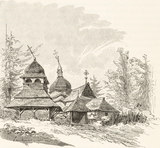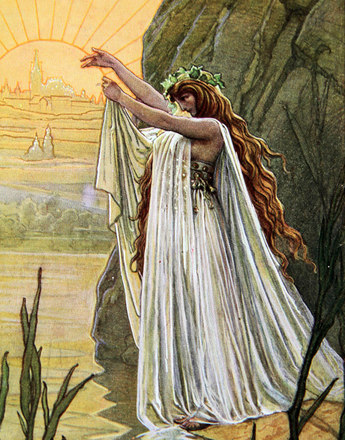The Ruthenians, as the West Ukrainians were called in Habsburg Austria, stepped into the epoch of nationalism with the worst possible cards in their hand. As “faceless people” they had no more than a very weak awareness of their own national autonomy. The status of knowledge about their ethnicity was minimal, also in the corridors of power in Vienna.
The Ruthenian-Ukrainian population of the Monarchy was distributed throughout the Crown lands of Galicia and Bukovina, also northeastern Hungary, and always in a minority position. Despite numerical strength – in 1910 there were more than four million speakers of the Ruthenian language – because of the centuries of social disadvantage, a politically active élite was formed only very hesitantly among the Ruthenians as vector of national awareness. Most of the mainly rural population lived in archaic conditions in the structurally weak regions in the eastern part of the Monarchy, untouched by the social and economic tide of modernisation that had gripped the western part of the empire.
The Ruthenian national consciousness was defined first and foremost by allegiance to the Greek-Catholic Church, which had been created in the course of forming the Polish-Lithuanian state through the Union of Brest (1596). The organisation of this Church was the result of the special situation of the West Ukrainians at the borderline between the Latin and Byzantine-Orthodox world. Despite retaining the Orthodox rite, the Greek-Catholic Church was subject to the authority of the Roman Pope. This independent Church organisation was a crucial factor for forming a national consciousness among the Ruthenians, since it offered a demarcation signal to the Catholic Poles and the Orthodox Ukrainians under Russian rule.
In comparison to the other peoples of the Habsburg Monarchy the Ruthenians were laggards in becoming a nation – a modern, national mindset did not take hold until the mid-nineteenth century. The previous regional and denominational consciousness was embedded in a national image of history that saw the historic task of the Ruthenians as creating a protective shield against the Asian rider hordes of the East. Indigenous inhabitants of the region, later they came under the rule of the Poles and Hungarians and lived symbiotically with other peoples (Jews, Armenians), who constantly exploited their naturally peace-loving nature. The goal was to shake off foreign dominion and attain emancipation from Polish, respectively Magyar paternalism.
Educational societies were formed to bring the achievements of enlightened modernism into the Ruthenian villages. There was a close amalgamation of national and social agendas. Measures to protect the peasantry and develop cooperatives aimed to improve the extremely poor economic situation of the Ruthenian small farmers and agricultural labourers. The Ruthenians also suffered under the massive emigration movement which tempted hundreds of thousands abroad or as work migrants into the industrial areas of the Monarchy. An outstanding personality in this context was the man of letters, translator and journalist Ivan Franko (1856–1916), who during his studies in Vienna described a gloomy picture of the major city. From the perspective of an outcast, he underlined the shadow sides of chic Vienna during the Ringstrasse era.
Translation: Abigail Prohaska
Rumpler, Helmut: Eine Chance für Mitteleuropa. Bürgerliche Emanzipation und Staatsverfall in der Habsburgermonarchie [Österreichische Geschichte 1804–1914, hrsg. von Herwig Wolfram], Wien 2005
Bihl, Wolfdieter: Die Ruthenen, in: Wandruszka, Adam/Urbanitsch, Peter (Hrsg.): Die Habsburgermonarchie 1848–1918, Band III: Die Völker des Reiches, Wien 1980, Teilband 1, 555–584
-
Chapters
- Poles and Ruthenians in the Habsburg Monarchy
- At the Margins of the Empire: Galicia and Bukovina
- The struggle of the Poles for their nation: Poland is not yet lost!
- Compromise with Vienna: Polish Autonomy in Galicia
- The Poles in the First World War: a Nation as Football for the Great Powers
- The Great Unknown: The Ruthenians
- Approach and Rejection: The Ruthenians between Austria and Russia




